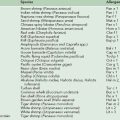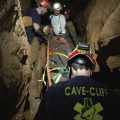Chapter 36 Wilderness Emergency Medical Services and Response Systems
Major disasters from 2000 to 2010:
| 2001—Gujarat earthquake, India | 20,000 deaths |
| 2003—Bam earthquake, Iran | 30,000 deaths |
| 2004—Indian Ocean earthquake and tsunami | 230,000 deaths |
| 2005—Kashmir earthquake, Pakistan | 85,000 deaths |
| 2005—Hurricane Katrina, United States | 1800 deaths |
| 2008—Sichuan China earthquake | 70,000 deaths |
| 2008—Cyclone Nargis, Burma (Myanmar) | 150,000 deaths |
| 2010—Haitian earthquake | 270,000+ deaths |
The principles that will help one to prepare to respond and serve are:
Safety
Shelter
Sustenance
Sanitation
Staying Well
Stress and Sanity
Remote Medicine
In the world of mountain rescue, the American Alpine Club’s Safety Committee gathers, reviews, and analyzes mountaineering accidents that have occurred throughout North America and publishes an annual report entitled Accidents in North American Mountaineering. The data collected illustrate both the necessary diversity of wilderness and mountain rescues and current limitations of the field (Box 36-1).
BOX 36-1 Mountain Search and Rescue Factors in the United States
Internationally, the Union Internationale des Associations d’Alpinisme (i.e., the International Mountaineering and Climbing Federation, http://www.uiaa.ch), which is headquartered in Bern, Switzerland, has established criteria and courses for postgraduate training in mountain medicine for physicians. After fulfilling these requirements, physicians in the European Union become certified in wilderness medicine and can practice the relevant skills in an appropriate arena. There is now a similar program for physicians being offered in the United States by the Wilderness Medical Society (http://www.wms.org). The Society has produced a curriculum to address various wilderness medical topics for a total of about 100 contact hours. On completion and qualification, the individual becomes a Fellow of the Academy of Wilderness Medicine.
In mountain and wilderness outdoor activities, including mountain and wilderness rescue, haste truly makes waste, which may, in certain circumstances, cost lives. As a result, wilderness and mountain rescue teams must achieve a balance between the urgency of the situation and the necessity for adequate preparation. This is not an easy or natural blend of emotions and skills. On the one hand, trained EMS professionals are always primed and ready to go and feel comfortable moving rapidly, acting quickly, and thinking on their feet. On the other hand, skilled outdoors people are always eager and willing to travel into the backcountry, but they understand the necessity of thorough preparedness. This attitude ensures not only that each team is prepared but also that each individual is prepared. The team must be organized from a leadership perspective and know where it is headed, what injuries to anticipate, and how weather will affect the rescue. The team counts on each individual member being physically and mentally prepared. This difficult task requires recognition of the differences between short-term and long-term care during a rescue so that a safe and successful extended care rescue can be achieved. Box 36-2 outlines key skills that training needs to include.
BOX 36-2 Rescue Personnel and Training in the United States
Sequence of Events During Backcountry Rescue
The principles and standards of a wilderness or mountain rescue (i.e., extended care rescue)—including organization, specialized skills and knowledge, and essential components of the team—can best be illustrated by reviewing the sequence of events during a typical backcountry rescue in North America (Box 36-3).
BOX 36-3 Sequence of Events in Backcountry Rescue
Notifying the Emergency Medical System
Assembling and Organizing the Rescue Team
Locating the Victim
How long it takes to locate the victim varies tremendously, depending on distance, terrain, weather conditions, mode of transportation, and whether the victim’s exact location is known. A general rule of thumb for a team that is responding on foot is that it will take 1 hour for each mile traveled through the backcountry. If a search is involved, all bets are off. A search and rescue effort can involve many agencies, individuals, and days (see Chapter 37).
Providing Appropriate Extended Emergency Care
Regardless of what transpired before the medical team arrived, a complete victim assessment is essential. Do not assume that all of the injuries have been found or that all medical conditions have been managed properly (Box 36-4).
BOX 36-4 Victim Assessment
Primary Survey: Locating and Treating Life-Threatening Problems
Secondary Survey: What Is Wrong and How Serious Is It?
Vital Signs: Indicate the Condition of the Victim
Blood pressure: systolic/diastolic
Level of consciousness: AVPU (awake, verbal, painful, unconscious) or Glasgow Coma Scale
Tissue perfusion: skin color, temperature, and moisture
Victim examination: head-to-toe examination to locate injuries
SOAP Note: To Record and Organize Victim Data
Subjective: age, gender, mechanism of injury, and chief complaint
Objective: vital signs, victim examination, and AMPLE history
“Re-SOAPing” the Patient
Team Organization and Function
Personal Knowledge, Experience, and Expertise
Individuals who want to be part of an extended rescue team need to acquire outdoor skills before they become part of a rescue team. Every member must have extensive knowledge of likely environmental emergencies, including hypothermia, frostbite, heat syndromes, snakebite, dehydration, and lightning strike. Each individual must also understand the general principles of weather behavior. Rescuers need to be comfortable with route finding, maps and compasses, personal preparedness, and bivouac and survival skills. The knowledge, skills, and equipment that a skilled outdoors person should possess are often referred to as “the 10 essentials” (Boxes 36-5 and 36-6). The same skills, knowledge, and equipment that are commonly used by the outdoor enthusiast are essential on a mountain rescue.
BOX 36-5 The 10 Essentials
Extended Rescue Techniques and Skills
Specific skills and techniques that are applicable to a particular situation include those of search and rescue, vertical and technical rock climbing, and white-water navigation. Snow or winter camping or avalanche rescue may be required, depending on the environment. Extended rescue teams should require their members to have, at a minimum, the working knowledge and equipment described in Box 36-7.
BOX 36-7 Knowledge, Skills, and Equipment Needed by Extended Rescue Teams
Mountaineering Skills
Mountain and Extended Emergency Medical Skills
Topics of Extended Care Training and Principles Should Include the Following:
Training of Wilderness Emergency Medical Technicians
A typical WEMT course outline appears in Box 36-8. The topics in boldface are unique to WEMT programs; the other topics are required in a DOT EMT course. Hours per topic illustrate the time required for both EMT and WEMT training. This outline is arranged in the current DOT EMT recommended format, with the WEMT material added on a per-topic basis; topics are not necessarily listed in the order that they would be taught in a particular course. An explanation of the extended emergency medical care material that must be learned by WEMTs follows.
BOX 36-8 Emergency Medical Technician and Wilderness Emergency Medical Technician Course Curricula and Hours Per Topic
Introduction to Emergency Care
Self-Preservation
The essentials of personal survival include:
Appendix
Advanced Wilderness Life Support
University of Utah School of Medicine
http://www.americanalpineclub.org
American Mountain Guides Association
1209 Pearl Street, Suites 12 and 14
E-mail: information@outdoors.org
International Society for Mountain Medicine
Colorado Springs, CO 80931-1142
Fax: 719-572-1514 or 800-967-7494 (in the United States)
Phone: 888-905-7238 or 828-488-2176
National Association for Search and Rescue
National Cave Rescue Commission
c/o National Speleological Society
Emergency: National Rescue Coordination: 800-851-3051
Resource: Active national cave rescue team.
National Ski Patrol System, Inc.
Ski Patrol Building, Suite 100
Stonehearth Open Learning Opportunities
202-267-1012 (Boating Operations)
400 Riverside Street, Suite A-6
Phone: 207-797-6005 or 888-WILD-MED (945-3633 within the United States and Canada)
Resource: Offers a variety of courses and certifications in wilderness medical and rescue courses.
810 E. 10th Street, P.O. Box 1897
Wilderness Medicine Institute of the National Outdoor Leadership School
Resource: Offers a variety of courses and certifications in wilderness medicine and rescue.
American Academy of Orthopedic Surgeons. Emergency care and transportation of the sick and injured. Sudbury, Mass: Jones & Bartlett; 1999.
Auerbach P. Medicine for the outdoors, ed 5. Philadelphia: Mosby Elsevier; 2009.
Bowman W. Outdoor emergency care, ed 3. Lakewood, Colo: National Ski Patrol System; 1998.
Forgey W, editor. Wilderness Medical Society: Practice guidelines for wilderness emergency care. Merrillville, Ind: ICS Books, 1995.
Henry M, Stapleton E. EMT prehospital care, ed 2. Philadelphia: WB Saunders; 1997.
Houston C. Going higher, ed 4. Seattle: The Mountaineers Books; 1998.
Iverson KV, editor. Position statements of the Wilderness Medical Society. Point Reyes Station, Calif: Wilderness Medical Society, 1989.
Lindsey L, Aughton B, Doherty N, et al. Wilderness first responder: Recommended minimum course topics. Wilderness Medical Society Curriculum Committee. Wilderness Environ Med. 1999;10:13.
McSwain N, Paturas JL. The Basic EMT: Comprehensive prehospital care, ed 1. St Louis: Mosby; 1997.
Mistovich J, Hafen BQ, Karren KJ, et al. Prehospital emergency care and crisis intervention, ed 6. Upper Saddle River, NJ: Brady; 2000.
Schimelpfenig T, Lindsey L. NOLS wilderness first aid. Lander, Wyo: National Outdoor Leadership School; 2000.
U.S. Department of Transportation, National Highway Traffic Safety Administration. Emergency medical technician-Basic: National standard curriculum, ed 4. Washington, DC: U.S. Government Printing Office; 1994.
Wilkerson J, editor. Medicine for mountaineering, ed 4, Seattle: The Mountaineers Books, 1993.
Williamson J, editor: Accidents in North American mountaineering, Golden, Colo, American, published yearly, American Alpine Club







